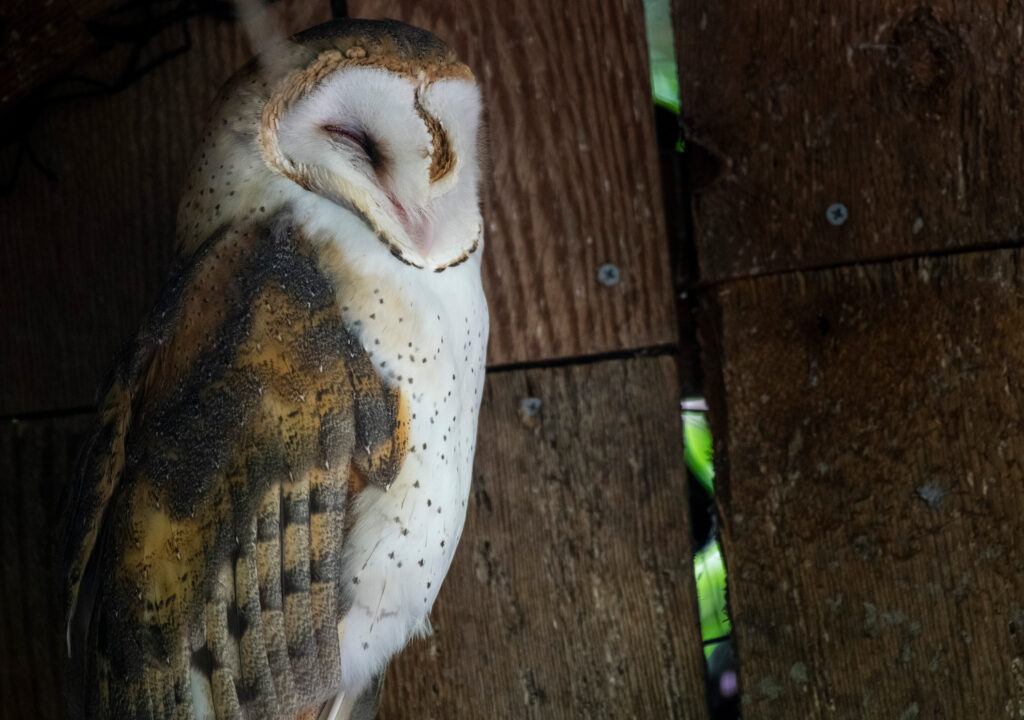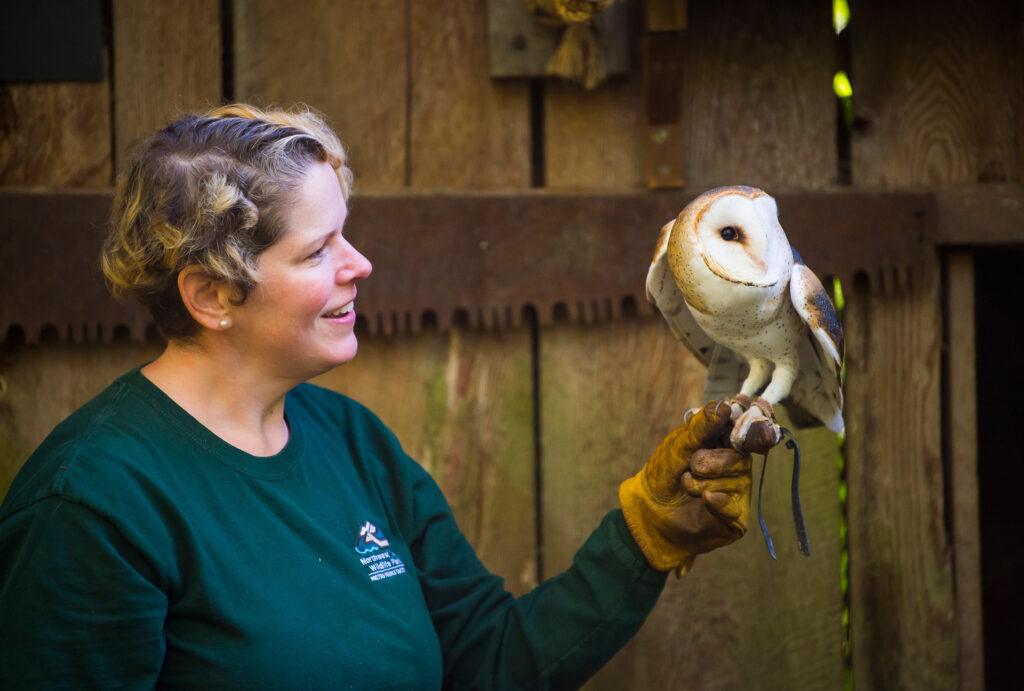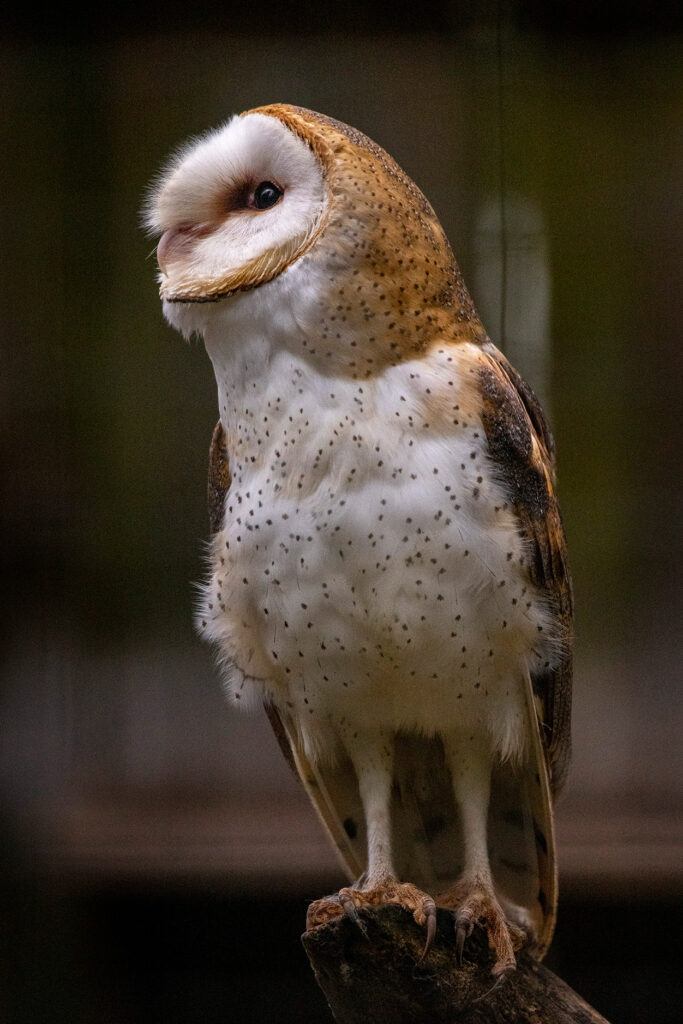Owls get a bad rap around this time of the year. They’re associated with bad luck and hooting off evil – but none of that is true. Owls are only bad luck if you happen to be a mouse! And the only reason they hoot is to communicate with other owls.

In some countries, owls are killed because of the negative associations with them. We want to change that narrative: owls are beautiful, intelligent creatures that keep the rodent population down.
Northwest Trek’s 8-year-old barn owl, Teklus (pronounced Tuck-loose), is an excellent ambassador for his wild counterparts. If you’ve visited the wildlife park during the daytime, you’ve probably seen him sleeping in a corner of the barn owl habitat.
“Barn owls are among the most nocturnal of owls since their prey, rodents, are active at night,” said keeper Miranda. “Their exceptional hearing helps them hunt in the dark.”

While barn owls eat primarily rodents, they occasionally eat small mammals and birds. Miranda says Teklus has a strong preference for mice.
Miranda says Teklus is content to sleep the day away and can sleep through anything. When Teklus is awake, he’s very interactive with keepers.
“He is a curious owl and likes to explore any dark spaces he can find,” said Miranda.
Meet Teklus at Hoot ‘n’ Howl
Meet Teklus at night when he’s awake during Northwest Trek’s annual nighttime Hoot ‘n’ Howl event Oct. 13-14 and Oct. 20-21. The special barn owl keeper chat will be each night at 6:30 p.m.
In the wild
In the wild, barn owls can be found living in woodlands, suburbs, farmlands, and open areas and perched in dark caves, cavities, or buildings. They can be easily spotted by their white, heart-shaped face and long, pointed wings extending beyond the tail.
